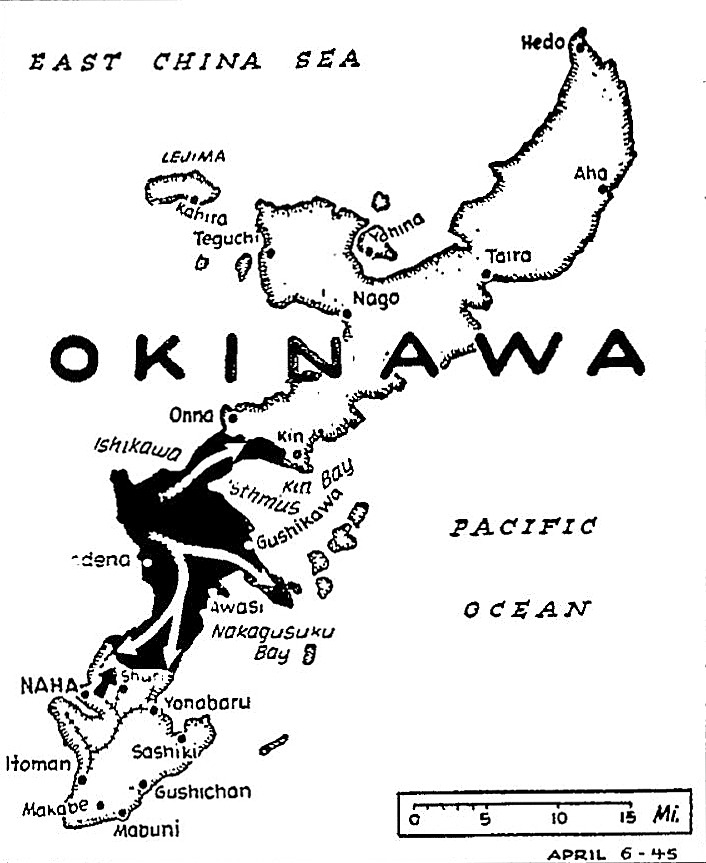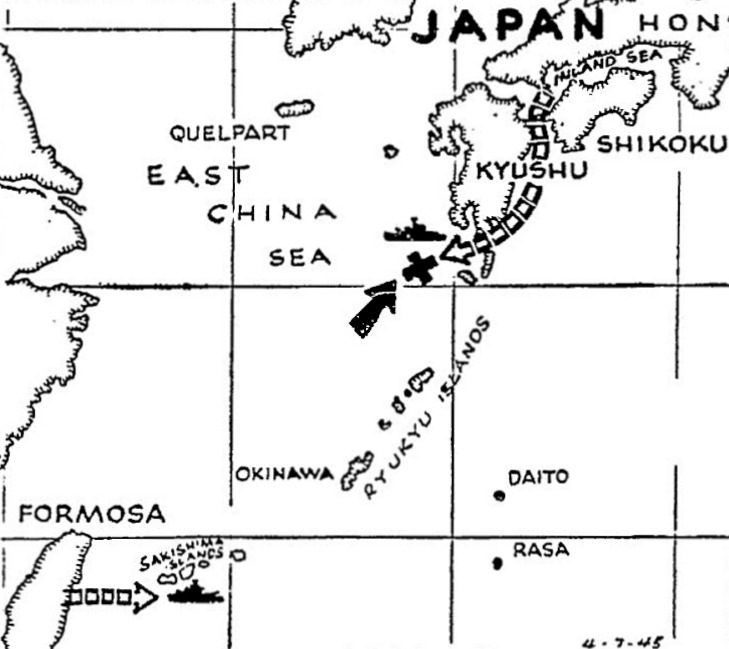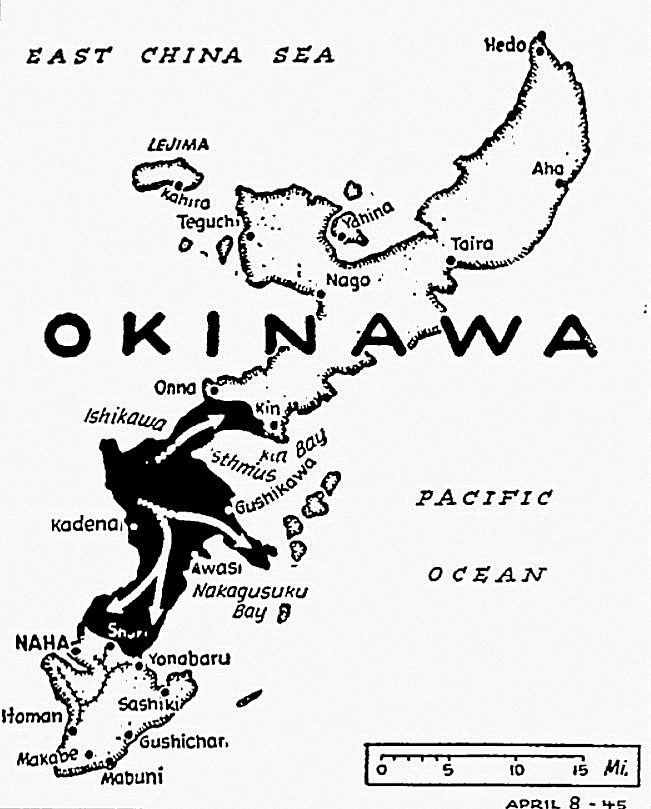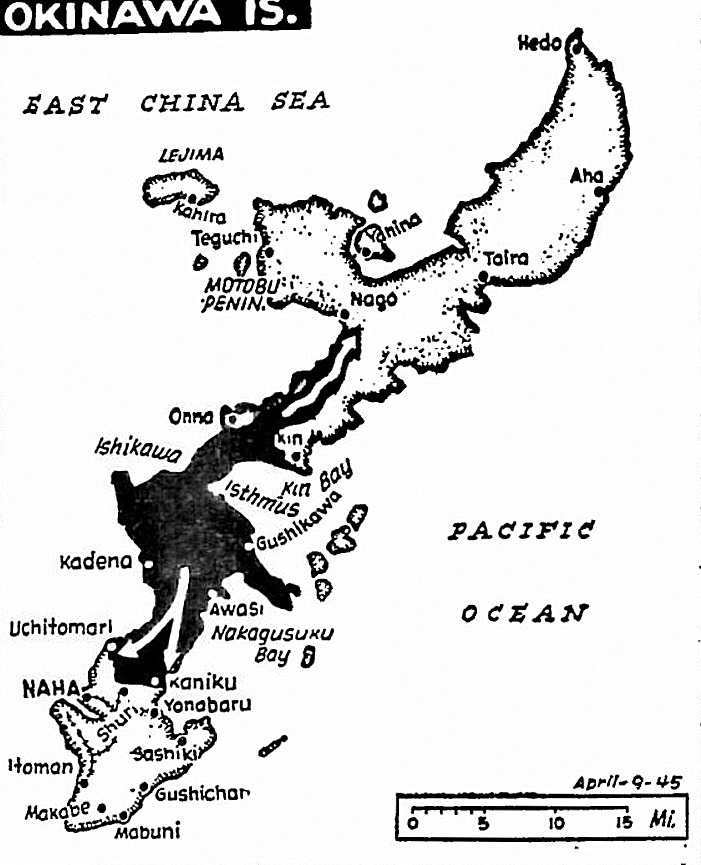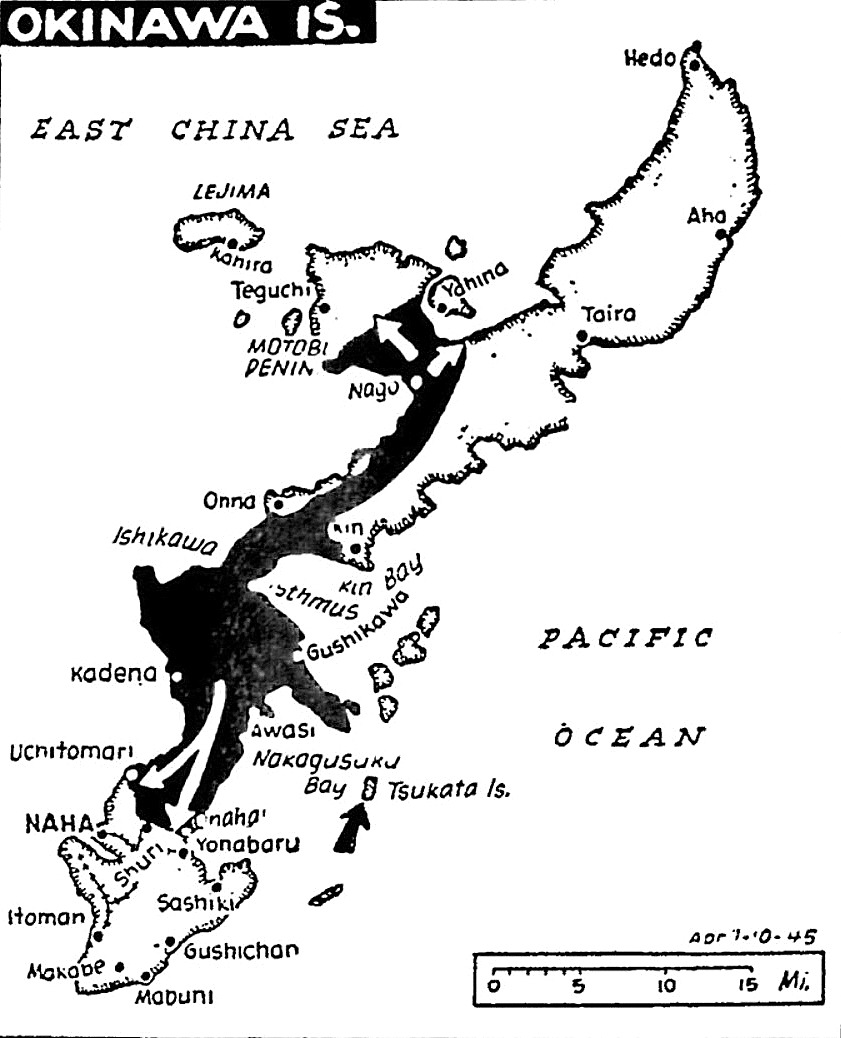The Pittsburgh Press (April 5, 1945)
Showdown battle near on Okinawa
Yank drive slowed by stiff resistance
GUAM (UP) – The showdown battle of Southern Okinawa and the Jap island bastion’s capital city of Naha appeared to be shaping up or already mounting to full fury today.
Field reports said suddenly stiffened resistance had slowed the Tenth Army’s advance on Okinawa to a snail’s pace. The Japs were fighting hard from well-prepared positions – perhaps the lines on which they chose to undertake a stand – a little more than four miles north of Naha.
Both American and Jap tanks were jockeying for positions. A front dispatch reported the possibility of a major tank battle, the first of the war in the Pacific, on the plain between Naha and Kaniku.
Reach outposts
In one sector, a Jap tank concentration had already stalled the American push temporarily.
“Apparently we have reached the outposts of enemy defenses in the south, where a force of as many as 60,000 Japanese may be concealed,” United Press writer Edward L. Thomas reported from an advanced command post on Okinawa.
He said Jap strongpoints appeared to be scattered through the hills around the villages of Kaniku, Tsuwa and Tabaru. Approaching them, the Americans overran several preliminary lines of resistance in advances of 500 to 1,500 yards down the 3½-mile wide isthmus separating Central and Southern Okinawa.
Run into heavy fire
The hills command much of Southern Okinawa. Troops pushing through a misty rain toward one 600-foot height guarding the approaches to Shuri ran into heavy artillery, machine-gun and mortar fire.
The enemy appeared determined to hold Machinato and Yonabaru airfields, both within a mile and a half to two miles of the advancing Americans.
The veteran 32nd Infantry Regiment of the 7th Infantry Division on the eastern end of the line above Naha smashed the first organized resistance of the campaign yesterday with the capture of a ridge above Ishado on Nakagusuku Bay naval anchorage.
The 184th Infantry Regiment, meanwhile, was attacking a Jap pocket estimated at company strength – possibly 200 men – on the west coast.
The Army advances on the southern front, coupled with a Marine push to the north deep into the narrow isthmus between Southern and Central Okinawa, gave the Americans control of 80 square miles – one sixth – of the island only 330 miles southwest of Japan.
The campaign was already 12 days ahead of schedule, with the invasion forces controlling 17 miles of the west coast and 12 miles of the east coast, including half the shoreline of the vital Nakagusuku Bay.
Marines gain
The XXIV Army Corps’ line in the south, as of yesterday, ran from Uchi-Tomari to the west coast, 4½ miles north of Naha and 1¾ miles north of Machinato Airfield. Through Kamiyama, in the center, to a point just north of Nakagusuku village and two miles north or Yonabaru Airfield in the east coast.
On the northern end of the beachheads, Marines of the III Amphibious Corps drove to 2½ miles beyond Ishikawa in the narrow neck of land separating South-Central and Centra! Okinawa, where it had been anticipated the Japs might make another stand.
Resistance continued light on the Marine front, though observation planes reported enemy concentrations ahead.
Jap planes attack
Jap planes made several small-scale air attacks on the invasion armada early yesterday, and four of the aircraft were shot down.
U.S. planes from a carrier task group commanded by Rear Adm. Frederick C. Sherman attacked airfields and other installations in the Amami Islands just north of Okinawa Tuesday.
They destroyed 45 planes in combat and two on the ground, damaged nine others on he ground, destroyed or damaged 25 small craft, damaged two small cargo ships and a torpedo boat, and set fuel dumps and buildings afire.
